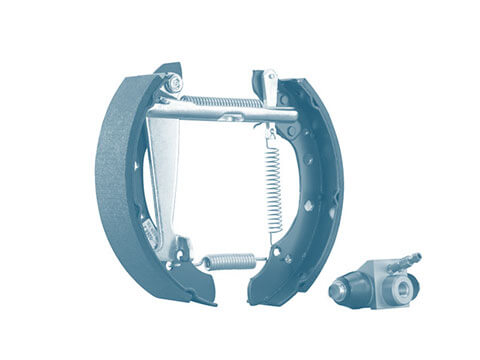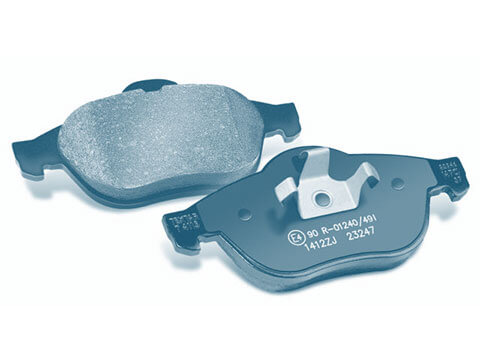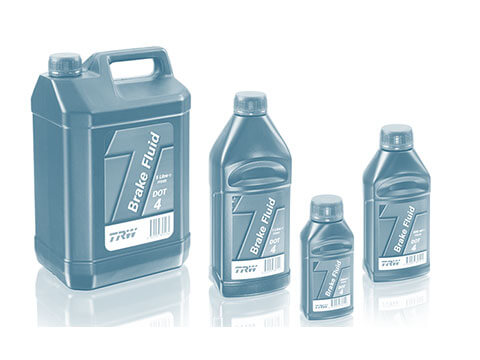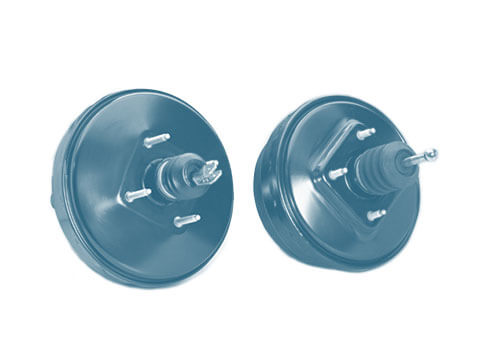Disc brake
The disc brake is the most widely used brake system on passenger cars. In many hybrid and electric vehicles it supplements the regenerative brake system with recuperation function.
Function
The conventional friction brake remains indispensable, even in hybrid and electric vehicles that have a regenerative brake system, because the braking power generated during recuperation is not sufficient for all the vehicle’s braking needs. That is why the disc brake continues to be used in electric vehicles as well.
A disc brake consists of a brake disc, which is fixed to the wheel hub, and a brake carrier to which the brake calliper is mounted, depending on the design in question. The brake pads are located in the brake calliper. The brake calliper encircles the brake disc.
The disc brake converts the car’s kinetic energy into heat through friction. Here, the brake pads are pressed onto the friction surface of the brake disc by a piston in the brake calliper. The friction energy generated in this manner brakes the disc and thus also the wheel, to which the disc is fixed and bolted. When the brake is released, the piston is retracted by an elastic sealing ring, which behaves like a spring.
Disc brake variants
A basic differentiation is made between three variants of the disc brake:
- Fixed-calliper disc brake: This contains pistons on both sides of the brake disc
- Sliding-calliper disc brake: This contains pistons on only one side of the brake calliper and has a sliding bearing
- Floating-calliper disc brake: This also contains pistons on only one side of the brake calliper and has a sliding bearing
Advantages of disc brakes
Disc brakes have good cooling and are very resistant to thermal loads. Their response is consistent and they remain largely unaffected by variations in the coefficient of friction of the brake pad. In terms of the brake disc, the wear on the brake pad is also uniform.
Disadvantages of disc brakes
On hybrid and electric vehicles that have the recuperation function, the friction brake is used much less often overall. This means that the wear on brake discs and pads/linings is much lower than on conventional vehicles without such a recuperation function. At first glance, this might appear to mean a longer service life for the brake pads and brake discs. However, the exact opposite is true for disc brakes – because the disc brakes are used rarely, they are more susceptible to corrosion (flash rust) and lose their braking force if they are not used for a long time.
Safety
In some hybrid and electric vehicles, the disc brake supplements the regenerative brake system with recuperation function, thereby improving the vehicle’s overall braking power. For this reason, the disc brake is one of the most important vehicle systems when it comes to safety.
Disc brakes are relatively low-wear and have a long service life. A specialist workshop should be consulted immediately if deterioration in the braking action of a disc brake becomes noticeable. Disc brakes must only be repaired by qualified personnel. The manufacturer’s installation instructions must be observed when doing so.
Value retention
Motorists need not concern themselves with the maintenance of disc brakes. Workshops check the level of wear and the action of drum brakes as part of vehicle inspection. The following aspects must be heeded to ensure optimum braking action and vehicle value retention:
- Only top-quality replacement parts should be used if individual components have to be renewed.
- Replacement parts must be expertly fitted at all times.

















